Abstract
Several soil ingestion studies have indicated that some children ingest substantial amounts of soil on given days. Although the EPA has assumed that 95% of children ingest 200 mg soil/day or less for exposure assessment purposes, some children have been observed to ingest up to 25-60 g soil during a single day. In light of the potential for children to ingest such large amounts of soil, an assessment was made of the possibility for soil pica episodes to result in acute intoxication from contaminant concentrations the EPA regards as representing conservative screening values (i.e., EPA soil screening levels and EPA Region III risk-based concentrations for residential soils). For a set of 13 chemicals included in the analysis, contaminant doses resulting from a one-time soil pica episode (5-50 g of soil ingested) were compared with acute dosages shown to produce toxicity in humans in clinical studies or case reports. For four of these chemicals, a soil pica episode was found to result in a contaminant dose approximating or exceeding the acute human lethal dose. For five of the remaining chemicals, the contaminant dose from a soil pica episode was well within the reported dose range in humans for toxicity other than lethality. Because both the exposure episodes and the toxicological response information are derived from observations in humans, these findings are regarded as particularly relevant for human health risk assessment. They suggest that, for some chemicals, ostensibly conservative soil criteria based on chronic exposure using current EPA methodology may not be protective of children during acute soil pica episodes.
Full text
PDF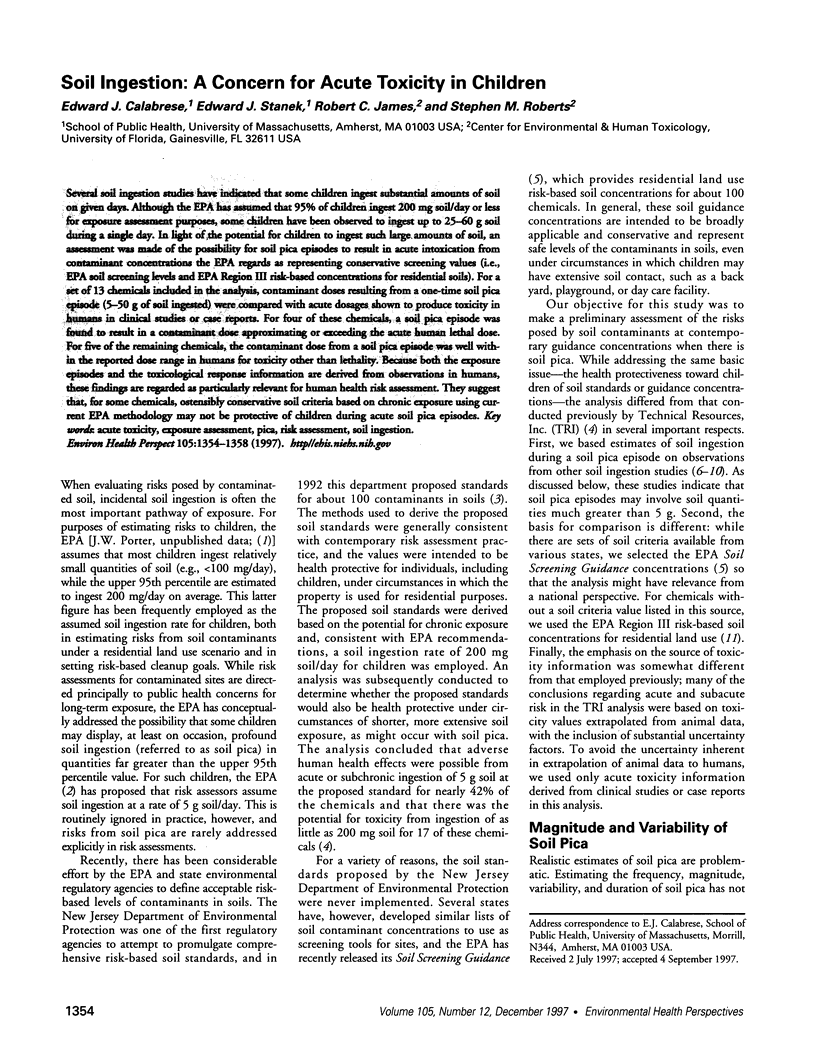
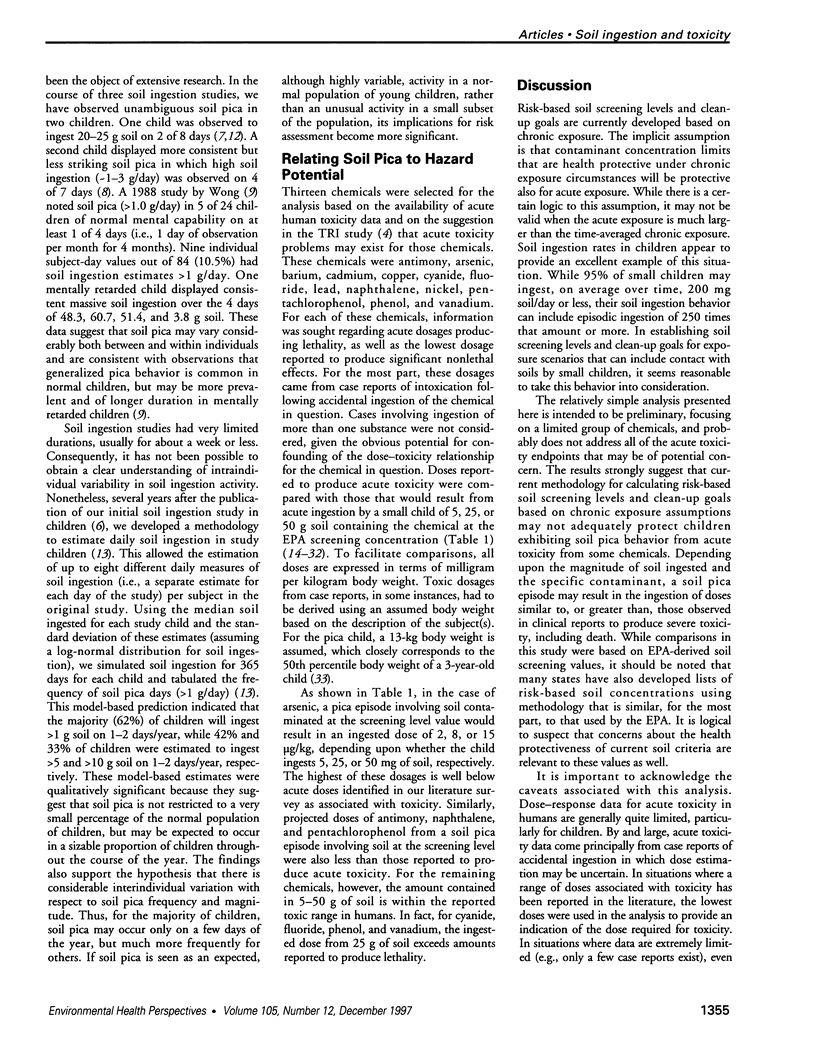
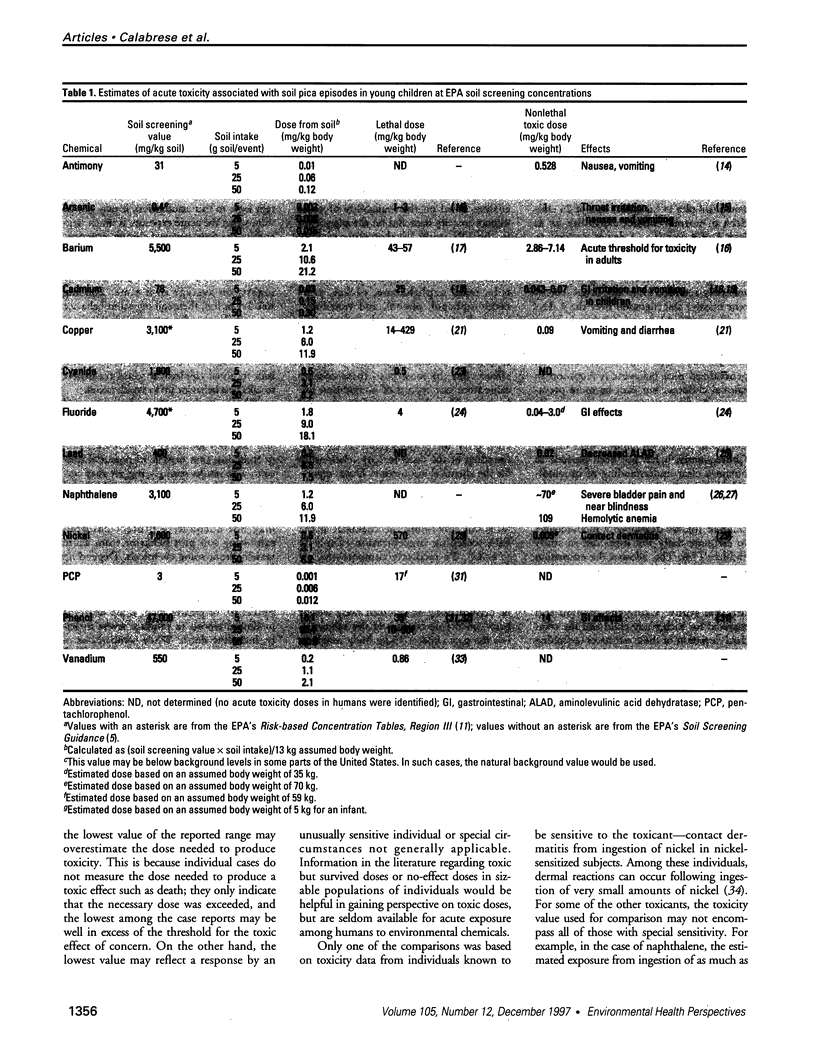
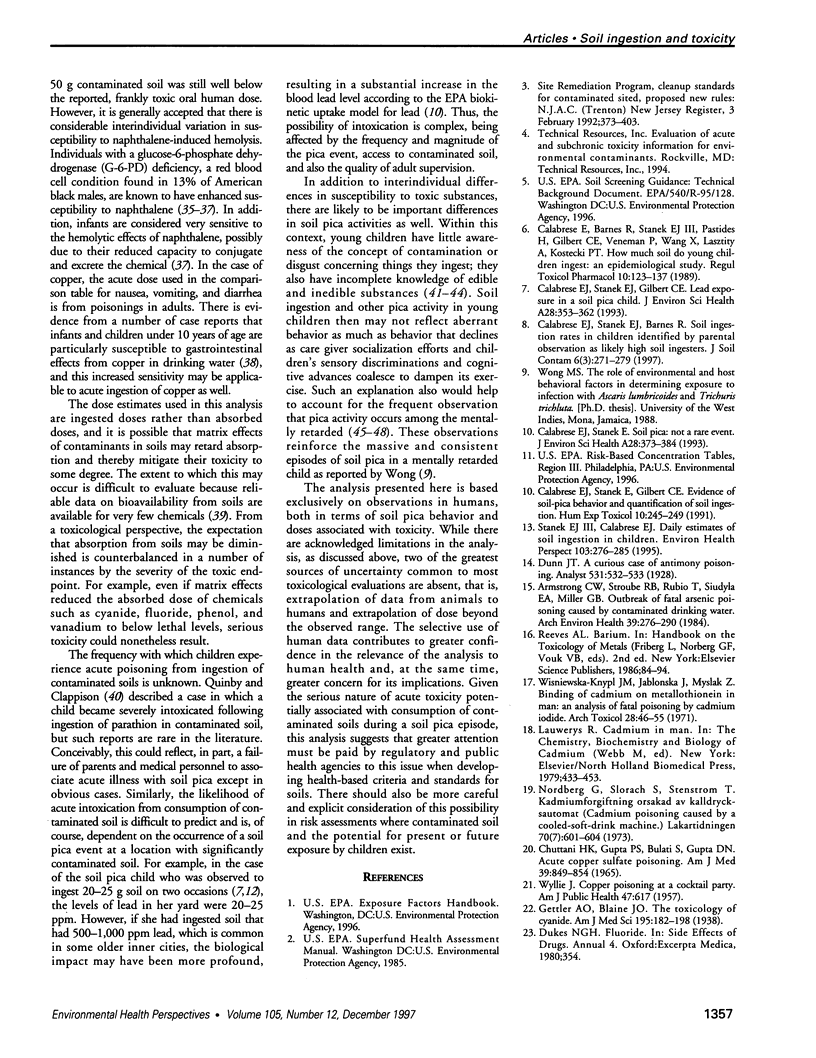
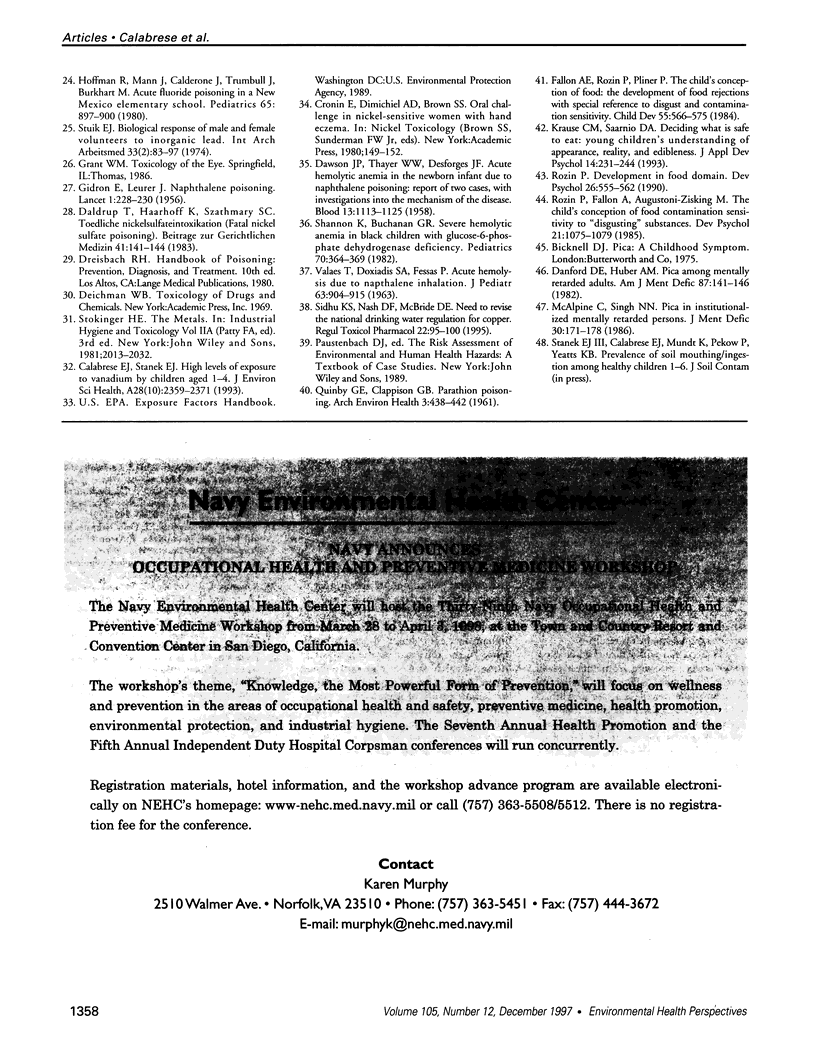
Selected References
These references are in PubMed. This may not be the complete list of references from this article.
- Armstrong C. W., Stroube R. B., Rubio T., Siudyla E. A., Miller G. B., Jr Outbreak of fatal arsenic poisoning caused by contaminated drinking water. Arch Environ Health. 1984 Jul-Aug;39(4):276–279. doi: 10.1080/00039896.1984.10545849. [DOI] [PubMed] [Google Scholar]
- Calabrese E. J., Barnes R., Stanek E. J., 3rd, Pastides H., Gilbert C. E., Veneman P., Wang X. R., Lasztity A., Kostecki P. T. How much soil do young children ingest: an epidemiologic study. Regul Toxicol Pharmacol. 1989 Oct;10(2):123–137. doi: 10.1016/0273-2300(89)90019-6. [DOI] [PubMed] [Google Scholar]
- Calabrese E. J., Stanek E. J., Gilbert C. E. Evidence of soil-pica behaviour and quantification of soil ingested. Hum Exp Toxicol. 1991 Jul;10(4):245–249. doi: 10.1177/096032719101000403. [DOI] [PubMed] [Google Scholar]
- Chuttani H. K., Gupta P. S., Gulati S., Gupta D. N. Acute copper sulfate poisoning. Am J Med. 1965 Nov;39(5):849–854. doi: 10.1016/0002-9343(65)90105-1. [DOI] [PubMed] [Google Scholar]
- DAWSON J. P., THAYER W. W., DESFORGES J. F. Acute hemolytic anemia in the newborn infant due to naphthalene poisoning: report of two cases, with investigations into the mechanism of the disease. Blood. 1958 Dec;13(12):1113–1125. [PubMed] [Google Scholar]
- Daldrup T., Haarhoff K., Szathmary S. C. Tödliche Nickelsulfatintoxikation. Beitr Gerichtl Med. 1983;41:141–144. [PubMed] [Google Scholar]
- Danford D. E., Huber A. M. Pica among mentally retarded adults. Am J Ment Defic. 1982 Sep;87(2):141–146. [PubMed] [Google Scholar]
- Fallon A. E., Rozin P., Pliner P. The child's conception of food: the development of food rejections with special reference to disgust and contamination sensitivity. Child Dev. 1984 Apr;55(2):566–575. [PubMed] [Google Scholar]
- GIDRON E., LEURER J. Naphthalene poisoning. Lancet. 1956 Feb 4;270(6910):228–231. doi: 10.1016/s0140-6736(56)91152-7. [DOI] [PubMed] [Google Scholar]
- Hoffman R., Mann J., Calderone J., Trumbull J., Burkhart M. Acute fluoride poisoning in a New Mexico elementary school. Pediatrics. 1980 May;65(5):897–900. [PubMed] [Google Scholar]
- McAlpine C., Singh N. N. Pica in institutionalized mentally retarded persons. J Ment Defic Res. 1986 Jun;30(Pt 2):171–178. doi: 10.1111/j.1365-2788.1986.tb01309.x. [DOI] [PubMed] [Google Scholar]
- Shannon K., Buchanan G. R. Severe hemolytic anemia in black children with glucose-6-phosphate dehydrogenase deficiency. Pediatrics. 1982 Sep;70(3):364–369. [PubMed] [Google Scholar]
- Sidhu K. S., Nash D. F., McBride D. E. Need to revise the national drinking water regulation for copper. Regul Toxicol Pharmacol. 1995 Aug;22(1):95–100. doi: 10.1006/rtph.1995.1072. [DOI] [PubMed] [Google Scholar]
- Stanek E. J., 3rd, Calabrese E. J. Daily estimates of soil ingestion in children. Environ Health Perspect. 1995 Mar;103(3):276–285. doi: 10.1289/ehp.95103276. [DOI] [PMC free article] [PubMed] [Google Scholar]
- Stuik E. J. Biological response of male and female volunteers to inorganic lead. Int Arch Arbeitsmed. 1974;33(2):83–97. doi: 10.1007/BF00538993. [DOI] [PubMed] [Google Scholar]
- VALAES T., DOXIADIS S. A., FESSAS P. ACUTE HEMOLYSIS DUE TO NAPHTHALENE INHALATION. J Pediatr. 1963 Nov;63:904–915. doi: 10.1016/s0022-3476(63)80221-8. [DOI] [PubMed] [Google Scholar]
- Wiśniewska-Knypl J., Jablońska J., Myślak Z. Binding of cadmium on metallothionein in man: an analysis of a fatal poisoning by cadmium iodide. Arch Toxikol. 1971;28(1):46–55. doi: 10.1007/BF00349627. [DOI] [PubMed] [Google Scholar]


